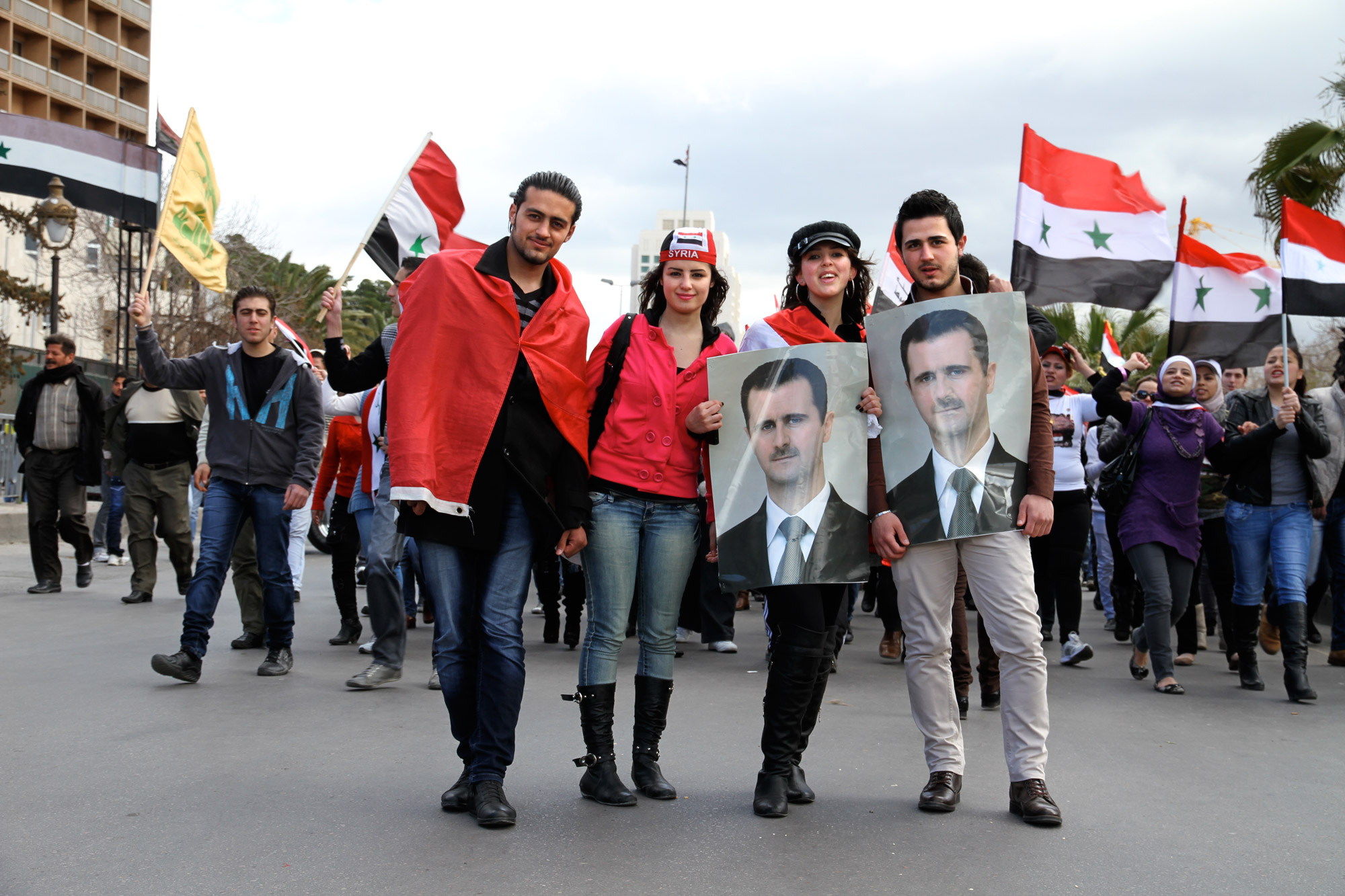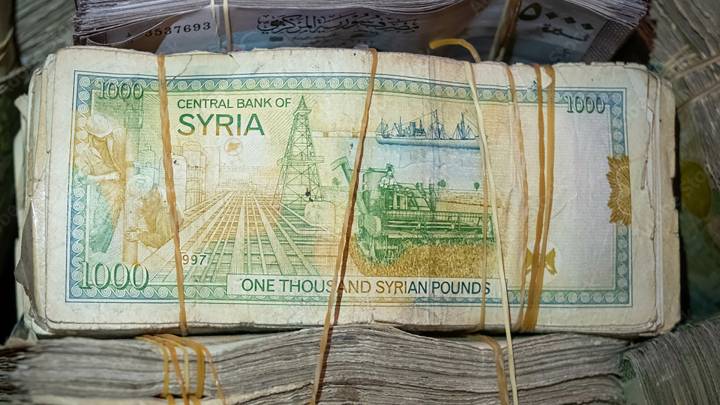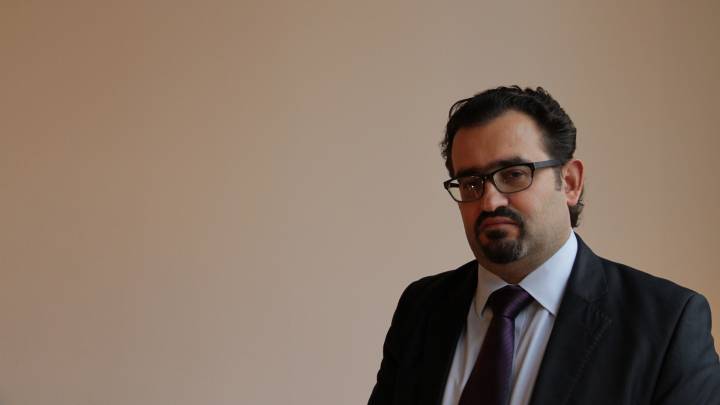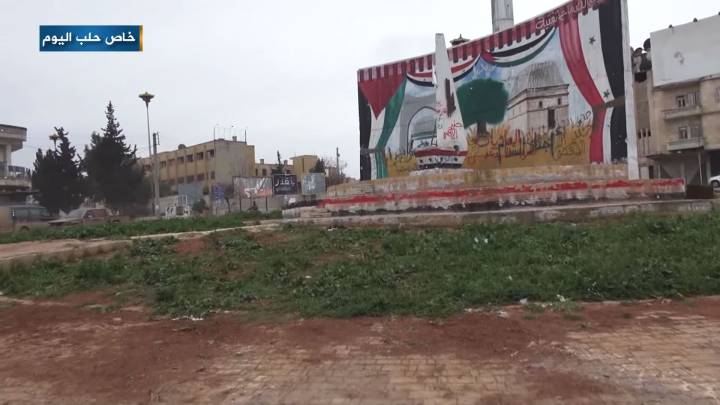Why is it that both regime supporters and armed Islamist rebels can play so successfully on Syria's sectarian problems? On takfir and takhwin, two concepts of domestication that look flagrantly alike.
For more or less a year after the beginning of the popular uprising against the Assad regime, many Syrians struggled to keep the fire of their revolution away from the devastating and explosive fuel of sectarianism. However, the sound of guns silenced the voices of national unity and reason. Quickly, practices surfaced, Syrians treating each other in ways which no one had dared to imagine. Virtually all sects of Syria seemed to wake up to a question: we knew that the others never liked us much. But why so much hatred?
These concepts of takfir and takhwin use different references, but they aren't so different in their logic or in their effect.Thus, as bloody time passed, Syrians were first split into two groups, then atomised into many rival factions, but overall into an ‘us’ and ‘them’. The survival instinct pressed all fighting parties to struggle by all means against an enemy seen as threatening their existence. It was necessary to use the media and all propaganda weapons; broadcasters covered the Syrian conflict around the clock. Each party of the conflict had their TV analysts who told the audience what they wanted to hear – demonising words about the enemy, the ‘other Syrians’, an often biased depiction of reality in order to mobilise support, saying that reality is dangerous, the conflict is bitter, and the conspiracy against us is very powerful.
Opposition, loyalists and the placement exam
From the start of the uprising against the Assad regime in Syria, different components of society started thinking about their interests and then determined their stance on the revolution. Eventually political stances on the conflict turned into military stances, reshaping the relationship between Syrians. Two parties emerged: the opposition and the pro-regime loyalists.
Syrians became part of this dichotomy, but some refused to play by the rules of this conflict. They rejected taking sides and became, rather, equidistant. But this group is certainly the weakest among Syrians, and it seems that it will remain so for some time.
The dichotomy of opposition and loyalists has driven Syrians to existential judgments, and these have become standard measures by which each side – or sect – not only prosecutes the other, but also its own community peers. Call it a placement exam, based on the question: where do you stand in the conflict? If you give a wrong or ambiguous answer, you are, depending where you come from, either a traitor or an infidel.
This categorisation based on loyalty to either the opposition or the regime might have started in the narrow circles of family, village or sect. The family became divided. The neighbourhood often ostracised those standing against what was perceived to be the best interest of the community, and the notion of the community was usually based on religious, confessional affiliation.
From March 2011, surrogates of the regime silenced any Alawites or other minorities who opposed the regime or tried to address the sociopolitical nature of the conflict. In well-known cases, Alawites and Ismailis were not only arrested and threatened by the regime's security forces (which mostly pushed them to emigrate), they were also imputed to have committed treason, not only against the regime but against their own sect. Moreover, they were held to be complicit with the opposition and therefore morally guilty for the blood of all the young men who defended both the homeland and the community.
On the other side, those who sought to topple the regime were in no hurry to discuss a real political alternative to Assad and the government, because many of the armed groups were not only fighting against the regime but also for an Islamic state – whatever that meant depended on each group's ideology. The armed opposition could not alienate these dominant groups, and many peaceful activists were kidnapped, killed or forcibly displaced. Violence was incited against them because they were accused of secularism, a simple but very dangerous charge. Secularism equals disbelief, in the eyes of many Salafi and Islamist fighters.
So, depending on your community, minority or Sunni majority, deviating from the stance of those waging war on either side made you either a traitor or an infidel.
The dichotomy of Alawite and Sunni
Those who saw this conflict (and acted) solely in sectarian terms got stronger. On the one side, there are those from the minorities who believe that only they represent civilised Syria and look at Sunnis with contempt. On the other side, a growing Sunni power embraces Salafi ideology and wants to take Syria back to its “Islamic origins”, which Baathism, in their eyes, desecrated.
The regime, its supporters and its international allies all warn on a daily basis of the threat of terrorism, religious fundamentalism and Salafi terrorism – in short, Sunni terrorism – which implicitly conveys the message that every Sunni is likely to be, sooner or later, a terrorist.
Armed, but also political, opposition to the regime became synonymous with ‘Wahhabi, externally financed’. For its part, the armed opposition did not show a commitment to correcting this stereotype of the Wahhabi-Salafi mercenary. Regime supporters thus declared them traitors willing to destroy the country.
On May 2, 2013, a video spread on the internet like fire in a haystack. It shows regime soldiers (clear names and faces and a distinctive Alawite dialect) mistreating men and youth in the Sunni village of Al-Baidha in the coastal area of Banias. The image of soldiers standing on the bodies of men from the village has been used consistently by the opposition to depict the regime as particularly contemptuous towards the Sunni majority.
With the clear and open support for the Assad regime of many Alawites whose youth have joined the regime’s armed struggle against Salafi fundamentalism, the conflict has taken on a new duality: Alawite versus Sunni. This brings Syrians back to the bloody events of the 1980s and the conflict between the regime and the Muslim Brotherhood, who wanted to overthrow Hafiz al-Assad.
Syria's national cause seems lost between two devastating concepts: takfir(todeclare someone a kafir, an infidel) from the armed, mainly Islamist, opposition; and takhwin (to impute disloyalty or declare someone a traitor) from the regime.
Live with it and die
These concepts of takfir and takhwin use different references, but they aren't so different in their logic or in their effect. Takfir, a sort of excommunication, results from the violation of Sharia law and the encroachment of the divine. Takfir is the favourite sport of the sort of Jihadists who strive day and night to guard the purity of God from impurities, and to bring the people back to the real faith.
Thus, those who abandon the teachings of religion, as determined by the guards and protectors of faith, have to be punished according to Sharia. According to this belief, abandoning Sharia is dangerous to society, in particular in times of war when its cohesion is already challenged. Therefore it is punishable by public beheading, in broad daylight, to set an example.
Takfirism does not content itself with excommunicating what is perceived as the godless regime or the deviationist Alawites. It also targets Sunni Muslims who do not prove loyal to the cause.
On the other side, the regime has been based for half a century on nationalist slogans that filled the walls of the homeland with promises of progress, liberalism, secularism and resistance against Zionism and imperialism. It has recently strengthened this nationalist rhetoric with slogans about resisting a global conspiracy against Syria, a nation described by the regime as “God’s paradise on Earth”. This resistance requires firmness in the face of both the near enemy (opponents of the regime) and the far enemy (imperialists and Zionists).
According to the regime's narrative, firmness is necessary; there is no substitute for it. For the homeland (the state, the institutions, the regime) is most precious and worth all sacrifice, which means the lives of Syrians. Whoever hesitates to defend these sanctuaries is equal to those who wage war against them, and therefore a traitor. Treason usually has different degrees, but in wartime there is only one: high treason. The penalty can be no other than death.
Takfir and takhwin are two concepts that affect the ‘other’, the enemy, but first of all they affect one’s peers, sometimes even one’s closest friends. Both concepts defend tyranny and are instruments of domestication. In the ironic and bitter reality of Syrians, these sectarian concepts can even cross sects, so much do they resemble each other in theory and practice.
Both defend what is considered sacred. Both may force you to abandon the relative before the stranger, the friend before the foe. Small sacrifices in the eyes of those who fight for God’s own power and authority, but also to those who see the regime as holy, as tantamount to the existence of the community and the state. Live with it, and die.






